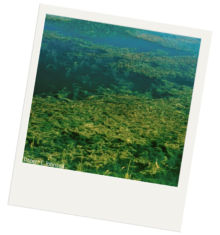
Other names: Eurasian watermilfoil, spiked watermilfoil, Myriophyllum spicatum
Where did it come from?
Eurasian watermilfoil was introduced into the United States between 1880-1940 from its native range in Europe, Asia, and North Africa.
Why is it invasive?
Eurasian watermilfoil out competes native species but is not good food or habitat for native animals. It makes dense mats on the surface of the water that tangle boats and swimmers.
How do you prevent its spread?
Clean, drain, and dry water equipment like boats.
Resources:
♦ Aquatic invasive species: Eurasian watermilfoil
Seen it? Report it! Through the app or online.
Image credit: Robert L. Johnson, Cornell University, Bugwood.org